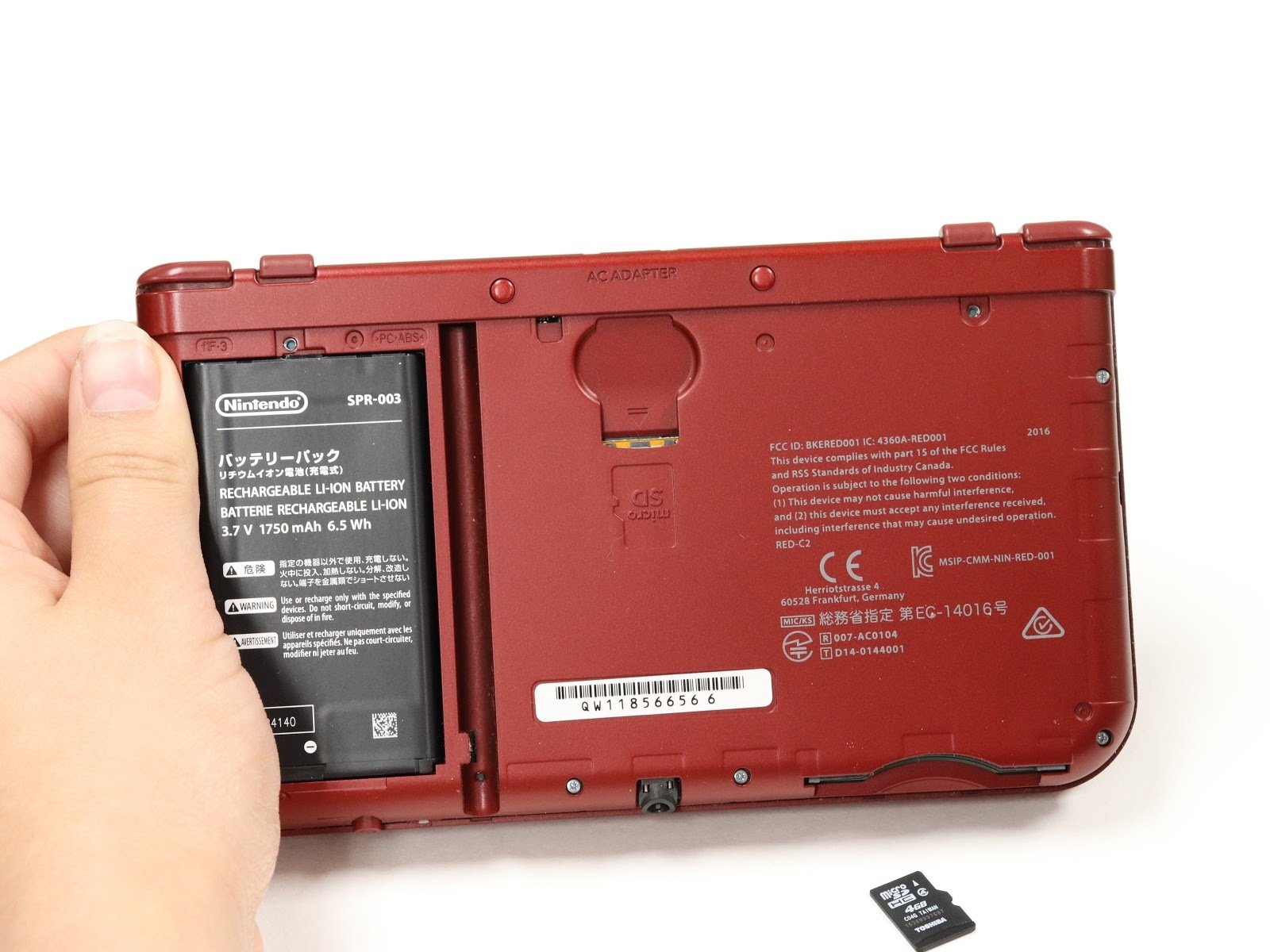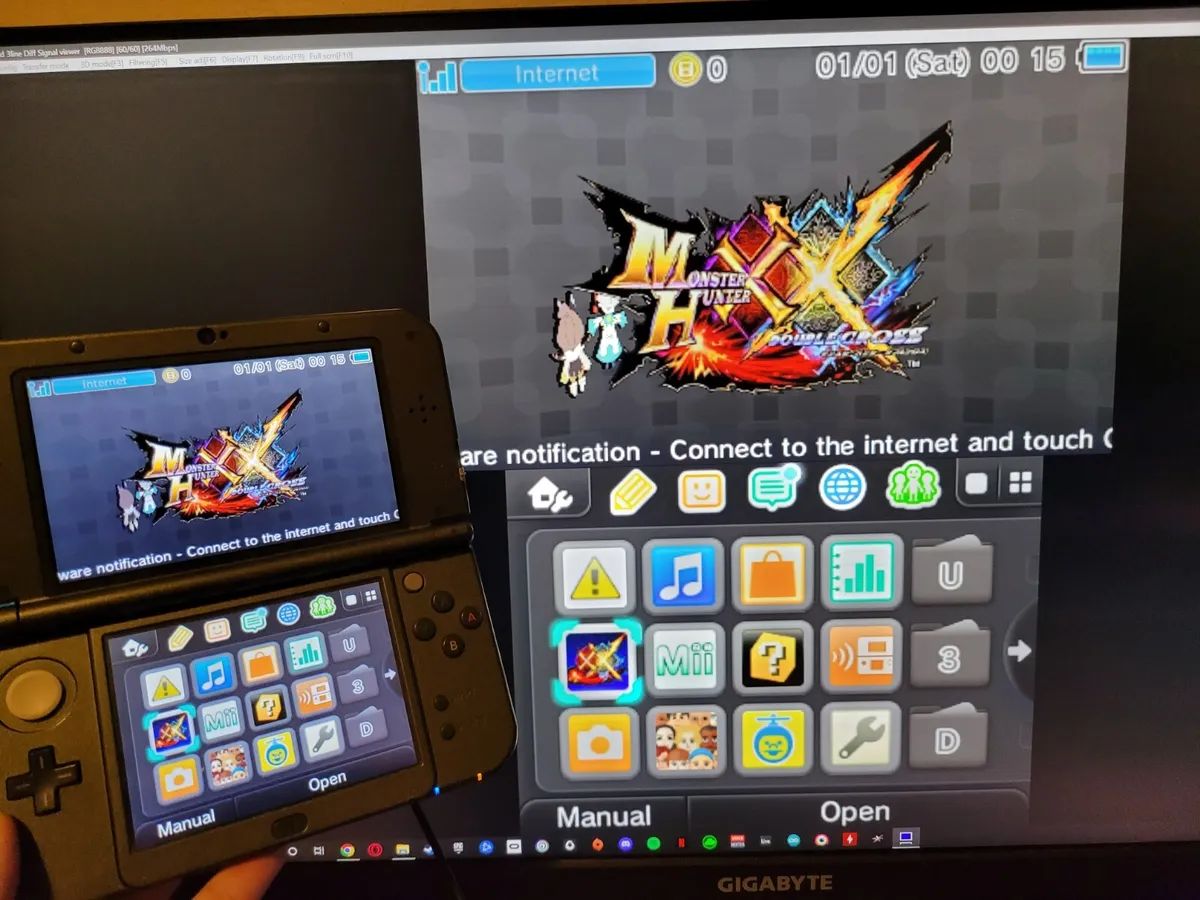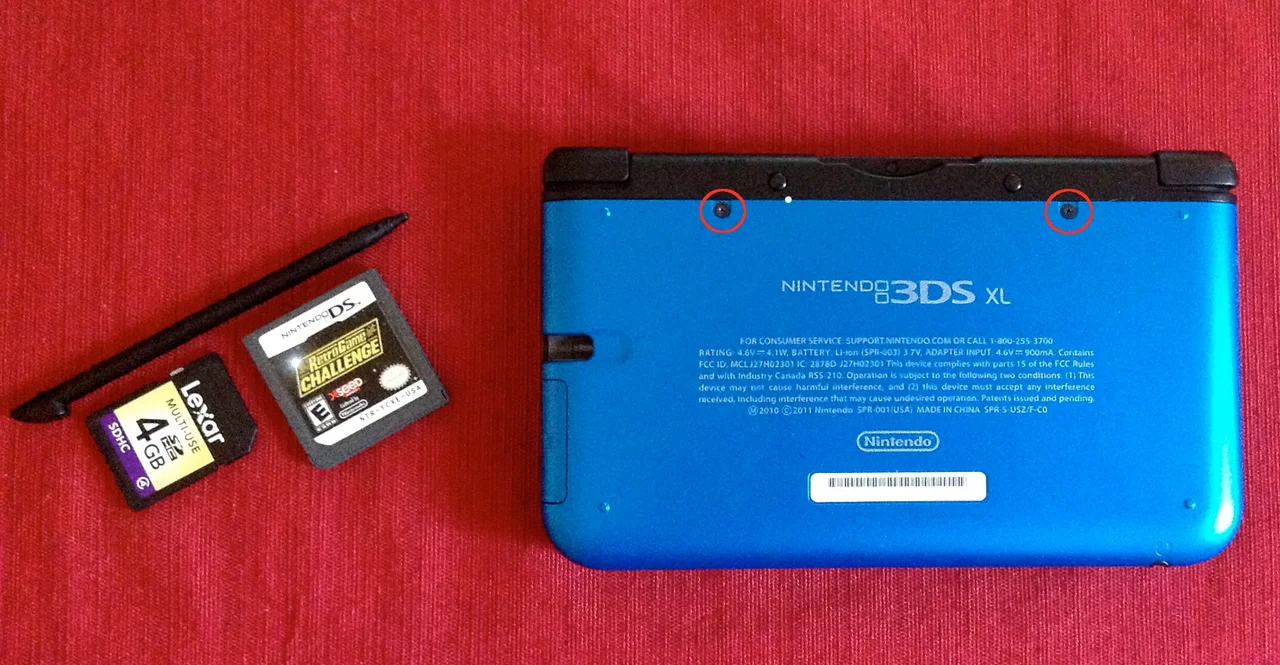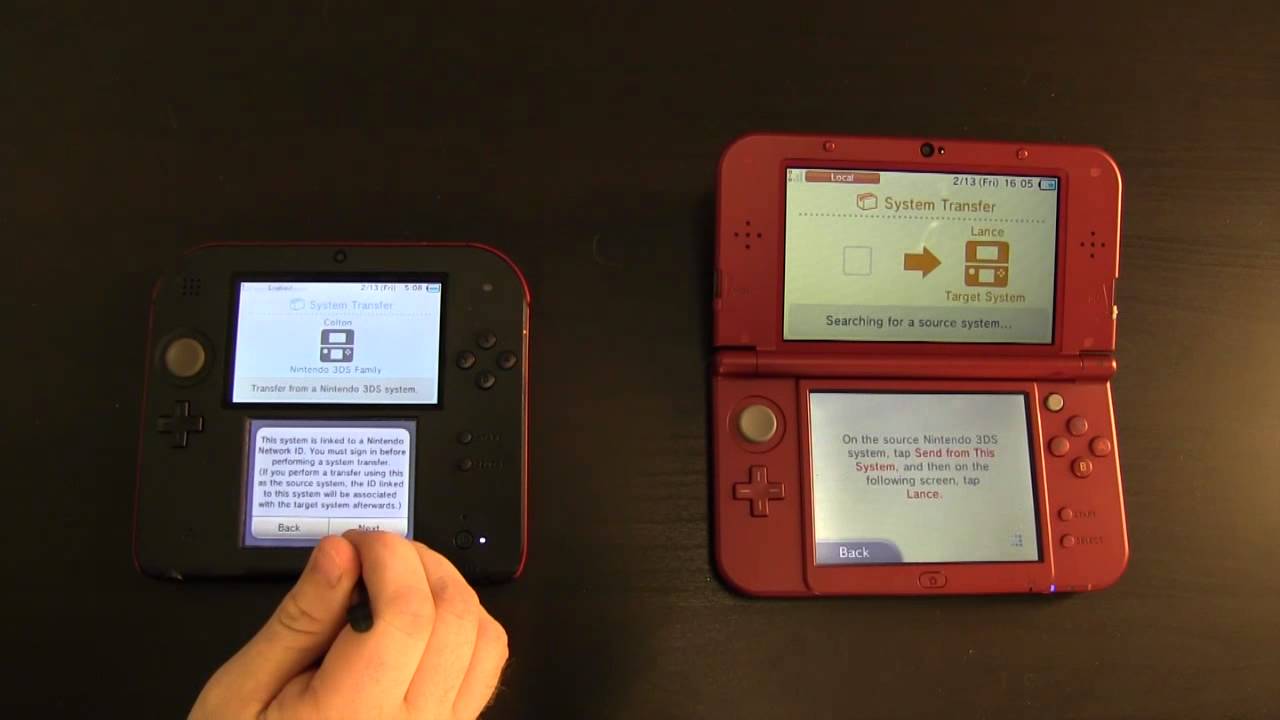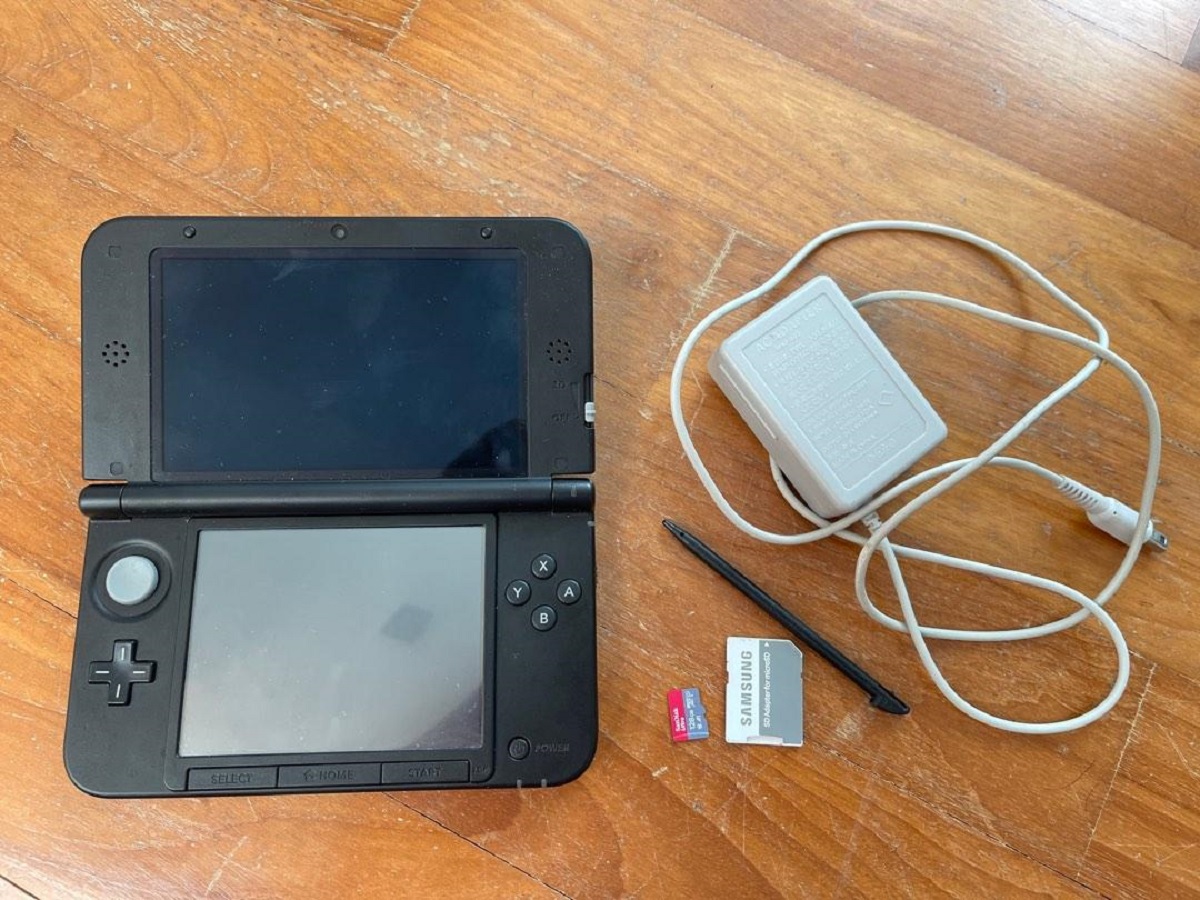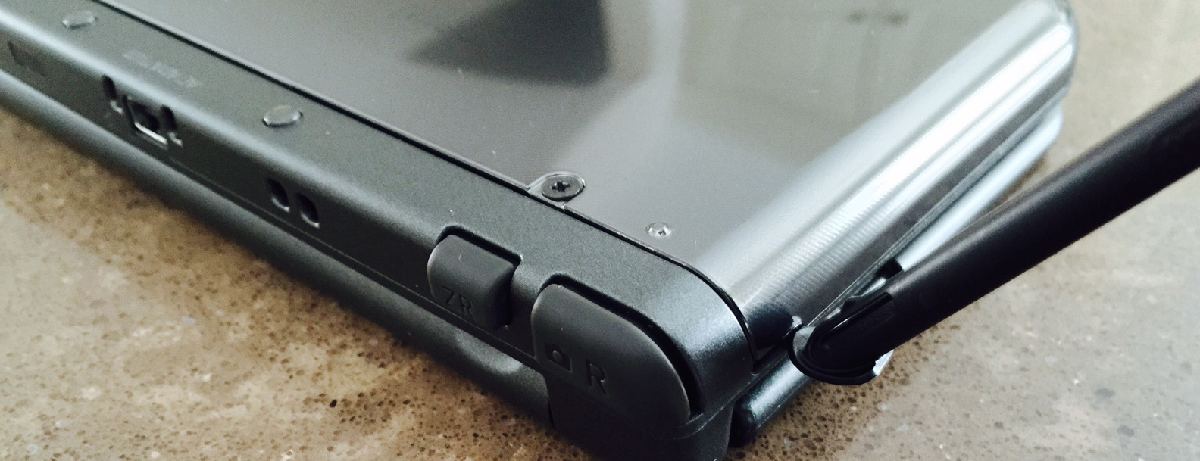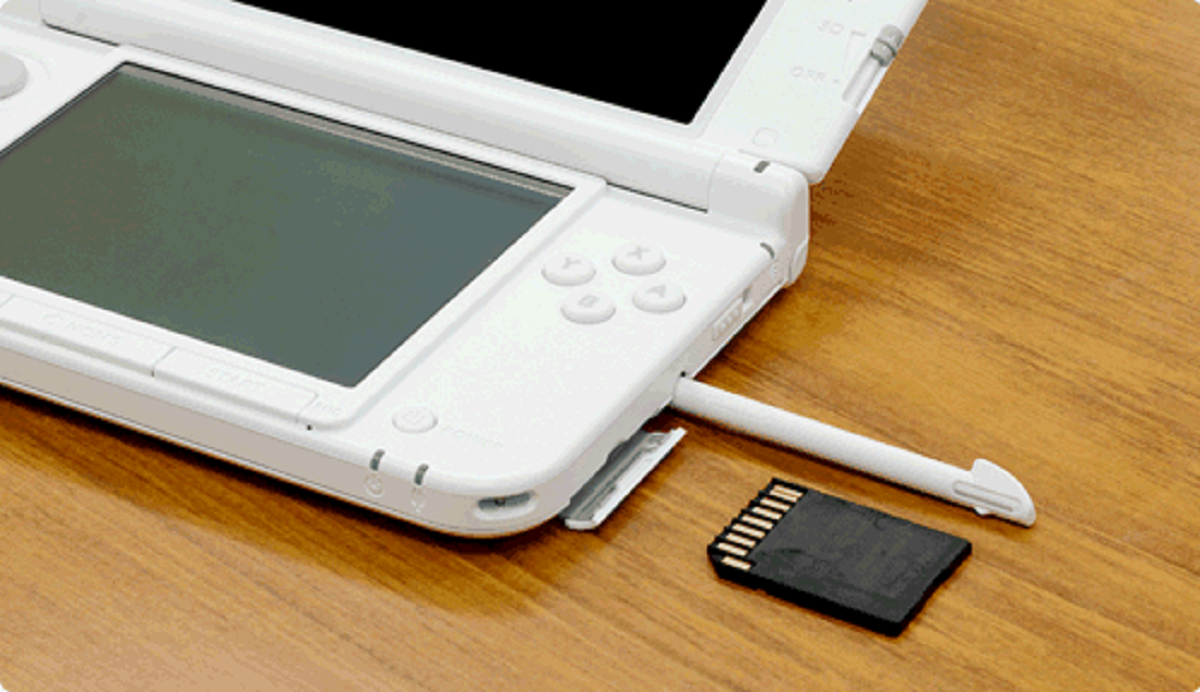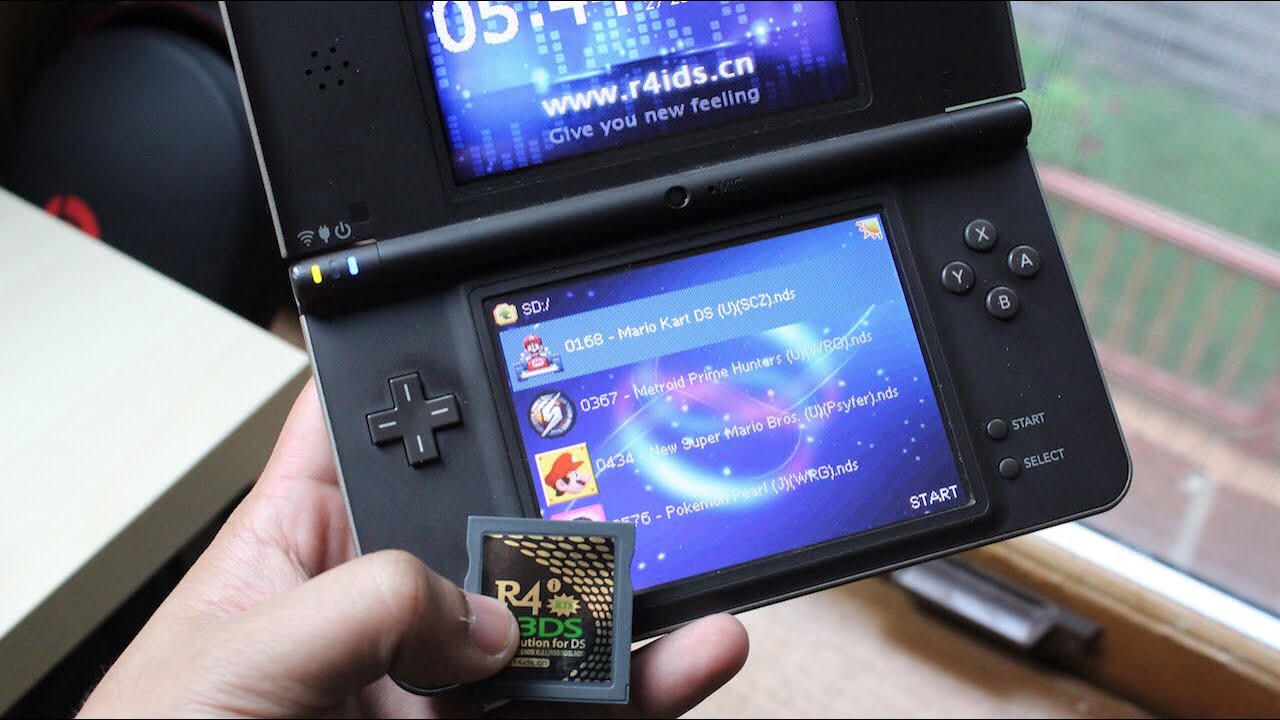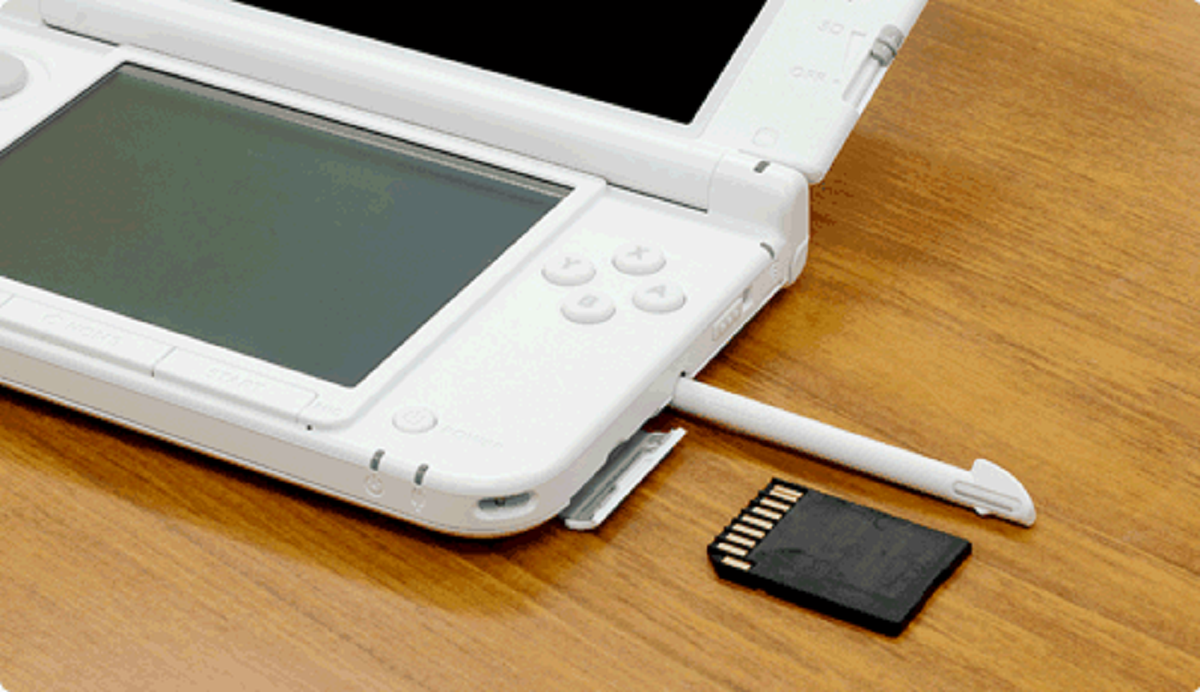Introduction
Welcome to the world of Nintendo 3DS! If you are a proud owner of this handheld gaming console, you may have wondered about the importance of an SD card for your gaming adventures. In this article, we will delve into the details of SD cards for the 3DS, their significance, and how to choose the right one for your gaming needs.
The Nintendo 3DS is a popular portable gaming device that offers a unique and immersive gaming experience. With its dual-screen display and impressive 3D capabilities, it allows players to enjoy their favorite games in a whole new dimension. However, to fully utilize the features and functionalities of the 3DS, it is essential to have an SD card.
An SD card, also known as a Secure Digital card, is a small, removable storage device that is used to store various data, including game saves, downloadable content, and digital games. The 3DS has a limited internal storage capacity, which is where the SD card comes into play. It provides additional space to store your games, photos, videos, and other essential data.
Without an SD card, you may find yourself constantly running out of space on your 3DS. This could mean deleting your favorite games or losing your progress in a game due to insufficient storage. With an SD card, you can expand your storage capacity, allowing you to have more games, save files, and digital content right at your fingertips.
Choosing the right SD card for your 3DS is crucial to ensure optimal performance and compatibility. In the next section, we will discuss the factors you need to consider when selecting an SD card for your 3DS, such as storage capacity, speed class, and brand reliability. By making an informed decision, you can enjoy uninterrupted gaming sessions without worrying about storage limitations.
What is a 3DS?
The Nintendo 3DS is a handheld gaming console released by Nintendo in 2011. It is the successor to the Nintendo DS and offers an enhanced gaming experience with its unique features and capabilities. The 3DS boasts dual screens, with the top screen providing autostereoscopic 3D effects, allowing players to enjoy games in three dimensions without the need for special glasses.
In addition to the 3D display, the 3DS also incorporates a touch screen, enabling intuitive touchscreen controls for easier navigation and gameplay. The console is equipped with built-in gyroscope and accelerometer sensors, which enhance the gaming experience and provide immersive motion-control gameplay. With its Wi-Fi capabilities, the 3DS allows players to connect with friends, engage in multiplayer gaming, and access various online features.
The 3DS supports a wide range of games, including popular franchises like Mario, Zelda, Pokemon, and many more. It also offers a diverse library of downloadable games and applications through the Nintendo eShop. Apart from gaming, the 3DS can also play media files, such as music and videos, further expanding its functionality beyond just gaming.
One notable feature of the 3DS is its backward compatibility, allowing players to enjoy DS games on the console. This makes it a versatile device for both new and existing Nintendo gamers. The 3DS comes in various models and editions, including the original 3DS, the larger 3DS XL, and the New Nintendo 3DS XL, which offers improved features and enhanced performance.
Overall, the Nintendo 3DS offers a unique gaming experience with its 3D display, touch screen, and motion controls. Its extensive library of games, backward compatibility, and connectivity features make it a popular choice among gamers of all ages. To fully enjoy the capabilities of the 3DS, it is essential to have an SD card that provides additional storage space for games, saves, and downloadable content.
What is an SD card?
An SD card, short for Secure Digital card, is a portable storage device commonly used in electronic devices such as digital cameras, smartphones, and gaming consoles. It is designed to provide additional storage space for various types of data, including photos, videos, music, and documents.
SD cards are compact in size, making them convenient for use in portable devices. They are available in different storage capacities, ranging from a few gigabytes to several terabytes, allowing users to choose the one that best suits their needs. The most common types of SD cards are the standard SD card, the miniSD card, and the microSD card, with the microSD card being the smallest in size.
One of the key advantages of using SD cards is their high level of compatibility. They can be easily inserted and removed from devices, making it simple to transfer files between different devices or upgrade storage capacity. Additionally, SD cards have a wide range of compatibility with devices that support the SD card format, making them versatile and widely accepted in various electronics.
SD cards also come with different speed classes, indicating their data transfer capabilities. The speed class is typically represented by a number inside a U-shaped symbol, such as “U1” or “U3.” Higher speed classes offer faster data transfer rates, which are particularly important for tasks that require quick read and write speeds, such as capturing high-resolution photos or recording videos in high-definition.
Another important aspect to consider when choosing an SD card is its durability and reliability. Some SD cards are designed to be more resistant to water, shock, temperature, and X-ray exposure, making them suitable for use in challenging environments or extreme conditions. It’s crucial to select an SD card that meets your specific needs and provides reliable performance.
In summary, an SD card is a portable storage device that offers additional storage space for various electronic devices. Its compact size, compatibility, and different speed classes make it a convenient and versatile option for expanding storage capacity and managing data on devices such as the Nintendo 3DS.
Why do you need an SD card for your 3DS?
If you own a Nintendo 3DS, having an SD card is crucial for several reasons. Let’s explore why you need an SD card for your 3DS:
1. Expand storage capacity: The internal storage of the 3DS is limited, and without an SD card, you may quickly run out of space for game saves, downloadable content, and digital games. An SD card provides additional storage space, allowing you to store more games, files, and media on your device.
2. Convenient data management: With an SD card, you can easily manage and organize your data on the 3DS. You can store your game saves, back up important files, and transfer data between different devices. This makes it convenient to switch cartridges or download new games without worrying about losing progress or running out of space.
3. Access downloadable content: Many games on the 3DS offer downloadable content (DLC) such as additional levels, characters, and features. Some games even release exclusive content as DLC. Having an SD card allows you to download and store this additional content, enhancing your gaming experience.
4. Capture and store photos and videos: The 3DS has built-in cameras that enable you to capture 3D photos and videos. An SD card provides ample space to store all your memorable moments and creative captures. You can also use the SD card to transfer these files to your computer or other devices.
5. Backup and data security: An SD card can serve as a backup storage solution for your important game saves and files. By regularly backing up your data onto the SD card, you can protect your progress and prevent any loss in case of accidental deletion or a console malfunction.
6. Share content with other devices: With an SD card, you can easily transfer data between your 3DS and other compatible devices, such as smartphones, tablets, or computers. This allows you to share screenshots, videos, or other files with friends, or simply backup your data for safekeeping.
In summary, an SD card is essential for your 3DS to expand storage capacity, conveniently manage data, access downloadable content, store photos and videos, backup important files, and share content with other devices. By having an SD card, you can take full advantage of your 3DS’s capabilities and enjoy a seamless gaming experience without worrying about storage limitations.
How to choose the right SD card for your 3DS?
Choosing the right SD card for your Nintendo 3DS is crucial to ensure optimal performance and compatibility. Here are some factors to consider when selecting an SD card:
1. Storage capacity: Determine how much storage space you need based on your gaming habits and data storage requirements. The 3DS supports SD cards up to 32GB, while newer models like the New Nintendo 3DS XL can utilize SD cards with capacities up to 2TB. Consider the number and size of games, DLC, and media files you plan to store on the SD card.
2. Speed class: The speed class of an SD card determines its data transfer rate. For optimal performance, choose an SD card with a higher speed class. Look for cards labeled as Class 10 or above, as they offer faster read and write speeds, ensuring smoother gameplay and quicker data transfers.
3. Brand reliability: Stick to reputable and well-known brands when selecting an SD card for your 3DS. Brands like SanDisk, Kingston, and Lexar are known for producing high-quality and reliable SD cards. Avoid purchasing off-brand or unbranded cards, as they may have compatibility issues or lower reliability.
4. Durability and features: Consider the environment in which you will be using your 3DS. If you plan to take your console on outdoor adventures or on the go, opt for a more durable SD card that can withstand shock, water, and temperature variations. Some SD cards are specifically designed for durability, providing added protection for your data.
5. Compatibility: Ensure that the SD card you choose is compatible with the 3DS. Most SD cards are compatible with the 3DS, but it’s always a good idea to double-check the specifications of your console to avoid any compatibility issues. Additionally, check if your computer or other devices can read the SD card format you choose.
6. Price: Consider your budget when selecting an SD card. Prices can vary depending on storage capacity, speed class, and brand. While it may be tempting to opt for the cheapest option, it’s important to strike a balance between affordability and performance. Invest in a reliable SD card that meets your needs and provides a good balance of price and quality.
By carefully considering these factors, you can select the right SD card for your 3DS, ensuring ample storage space, fast data transfer speeds, and compatibility with your console. This will allow you to fully enjoy your gaming experience without any storage limitations or performance issues.
What are the recommended SD card brands for the 3DS?
When it comes to choosing an SD card for your Nintendo 3DS, opting for a reputable brand is important to ensure reliability and compatibility. Here are some recommended SD card brands that are known for their quality:
1. SanDisk: SanDisk is one of the most well-known and trusted brands in the memory storage industry. They offer a wide range of SD cards with various storage capacities and speed classes. SanDisk SD cards are known for their reliability, performance, and durability, making them an excellent choice for the 3DS.
2. Kingston: Kingston is another reputable brand that produces high-quality SD cards. They offer a range of SD cards that deliver fast read and write speeds, providing smooth gameplay and quick data transfers. Kingston SD cards are known for their durability and compatibility, ensuring a seamless gaming experience on the 3DS.
3. Lexar: Lexar SD cards are well-regarded for their performance and reliability. They offer a range of SD cards with varying storage capacities and speed classes, catering to different user needs. Lexar SD cards are known for their durability and compatibility, making them a popular choice for 3DS owners.
4. Samsung: Samsung, a leading brand in technology, also produces SD cards that are compatible with the 3DS. Samsung SD cards offer excellent performance, high-speed data transfers, and reliable storage. They come in various storage capacities and are well-suited for gaming and multimedia purposes.
5. Toshiba: Toshiba is a trusted brand that manufactures reliable and high-performance SD cards. They offer a range of SD cards that deliver fast and reliable storage options for the 3DS. Toshiba SD cards are known for their durability and compatibility, making them a solid choice for expanding the storage capacity of your 3DS.
6. Sony: Sony, a renowned name in the electronics industry, also produces SD cards that are compatible with the 3DS. Sony SD cards offer excellent speed and performance, ensuring smooth gaming experiences with fast data transfer rates. They are known for their reliability and durability, making them a reliable choice for 3DS users.
It’s worth noting that these are just a few of the recommended SD card brands for the 3DS. Other reputable brands may also offer reliable and compatible SD cards. When purchasing an SD card, it’s essential to ensure that it meets the necessary specifications and compatibility requirements of your 3DS in order to ensure optimal performance and storage capacity.
How to insert an SD card into your 3DS?
Inserting an SD card into your Nintendo 3DS is a simple process that allows you to expand the storage capacity of your console. Follow these steps to insert an SD card into your 3DS:
1. Power off your 3DS: Before inserting or removing an SD card, make sure to power off your 3DS to avoid any potential data loss or damage to the card.
2. Locate the SD card slot: On the backside of your 3DS, you will find a small compartment flap. This is where the SD card slot is located. Open the compartment flap by gently pushing it in the direction indicated by the arrow.
3. Insert the SD card: Take your SD card and insert it into the SD card slot, ensuring that the metal contacts on the card are facing downwards. Push the card in until it is fully inserted and lies flat inside the slot.
4. Close the compartment flap: Once the SD card is inserted, gently close the compartment flap by pressing it back into place until it locks securely.
5. Power on your 3DS: After inserting the SD card, you can power on your 3DS and begin using the expanded storage capacity. The console should automatically recognize the presence of the SD card and adjust its settings accordingly.
6. Formatting the SD card: If you are using a new SD card or one that has been used with a different device, it may require formatting before it can be used with your 3DS. To format the SD card, go to the System Settings on your 3DS, select “Data Management,” then “Nintendo 3DS,” and finally “Format SD Card.” Follow the on-screen prompts to format the card.
Note: It’s essential to keep the SD card slot and the SD card itself clean and free from dust or debris. Regularly inspect and clean the slot to ensure proper functionality and avoid any potential issues with data transfer or damage to the card.
With these steps, you can easily insert an SD card into your Nintendo 3DS, expanding your storage capacity and allowing you to store more games, save files, and other data on your console.
How to transfer data between SD cards?
If you need to upgrade to a larger SD card or want to transfer data from one SD card to another, you can easily do so by following these steps:
1. Power off your 3DS: Before transferring data, make sure to power off your 3DS to avoid any potential data loss or damage.
2. Remove the current SD card: Open the compartment flap on the backside of your 3DS and carefully remove the current SD card from the slot. Ensure you handle it with care to prevent any damage.
3. Insert the new SD card: Take the new SD card that you want to transfer the data to and insert it into the SD card slot in your 3DS. Ensure it is fully inserted and lies flat inside the slot. Close the compartment flap securely.
4. Power on your 3DS: Power on your 3DS using the new SD card inserted. The console will recognize the new SD card and prompt you to format it. Follow the on-screen prompts to format the new SD card.
5. Use a PC: Remove the new SD card from your 3DS and insert it into a computer or laptop that has an SD card reader. Connect the old SD card to the computer using a card reader or adapter as well.
6. Transfer the files: Navigate to the old SD card on your computer and copy all the files and folders, including game saves, photos, and other data, to a temporary location on your computer. Then, locate the new SD card and paste the copied files and folders onto the new SD card.
7. Eject the SD cards: Once the data transfer is complete, safely eject both the old and new SD cards from your computer or laptop.
8. Insert the new SD card into your 3DS: Take the newly transferred data SD card and insert it back into the SD card slot on your 3DS. Ensure it is fully inserted and close the compartment flap securely.
9. Power on your 3DS: Power on your 3DS with the new SD card inserted. The console should recognize the data and configurations from the previous card, allowing you to continue where you left off.
10. Verify data transfer: Verify that all your data, including game saves, photos, and other files, are intact and accessible on your 3DS. Test the games and applications to ensure they are functioning properly.
By following these steps, you can successfully transfer data between SD cards, whether you are upgrading to a larger capacity card or simply transferring data to a new card. It’s important to handle the SD cards with care and safely eject them from the devices to ensure the integrity of the data.
What is the maximum capacity of an SD card for the 3DS?
The maximum capacity of an SD card that can be used with the Nintendo 3DS depends on the model of the console. Here are the maximum capacities supported by each model:
1. Nintendo 3DS: The original Nintendo 3DS model supports SD cards with a maximum capacity of 2GB. While it is possible to use larger capacity cards, it is recommended to stick with 2GB to avoid any compatibility issues.
2. Nintendo 3DS XL: The Nintendo 3DS XL, also known as the first generation XL model, supports SD cards with a maximum capacity of 4GB. Similar to the original 3DS, it is advisable to use cards within this capacity to ensure compatibility.
3. New Nintendo 3DS XL: The New Nintendo 3DS XL, which is an upgraded version of the console, has an increased maximum capacity. It supports SD cards with capacities up to 32GB. This allows users to expand their storage space significantly and store more games, save files, and digital content.
It’s important to note that the 3DS consoles are designed to be compatible with SDHC (Secure Digital High Capacity) cards. Therefore, SDXC (Secure Digital eXtended Capacity) cards with capacities beyond 32GB are not officially supported. While some users have reported success using larger SDXC cards, it is not guaranteed and may lead to compatibility issues or performance limitations.
When purchasing an SD card for your 3DS, it is advisable to select a card with a capacity that matches the maximum supported by your console model. This ensures optimal performance and compatibility. It’s always a good idea to consult your console’s user manual or refer to Nintendo’s official website for any specific recommendations or updates regarding supported SD card capacities.
By selecting an SD card within the maximum supported capacity of your 3DS model, you can enjoy an expanded storage space to accommodate your gaming needs and save files without any compatibility concerns.
Conclusion
Having an SD card for your Nintendo 3DS is essential to expand the storage capacity and enhance your gaming experience. With the ability to store more games, save files, downloadable content, and media, an SD card allows you to fully utilize the capabilities of your 3DS without worrying about storage limitations.
In this article, we have explored various aspects of SD cards for the 3DS, including their importance, how to choose the right one, recommended brands, and the process of inserting and transferring data between SD cards. Selecting a reliable brand, considering storage capacity, speed class, compatibility, and durability are important factors in choosing an SD card that suits your needs.
By following the steps outlined in this article, you can easily insert an SD card into your 3DS, transfer data between SD cards, and ensure optimal performance of your console. Remember to power off your 3DS when inserting or removing an SD card, handle the cards with care, and keep them clean to prevent any potential issues or data loss.
Whether you are a casual gamer or a hardcore enthusiast, an SD card is a valuable accessory for your Nintendo 3DS. It empowers you to store and access your favorite games, progress, and multimedia content, allowing you to immerse yourself in the world of gaming anytime, anywhere.
So, make sure to choose a reliable and suitable SD card for your 3DS, follow the proper procedures for insertion and data transfer, and enjoy a seamless gaming experience with an expanded storage capacity.







